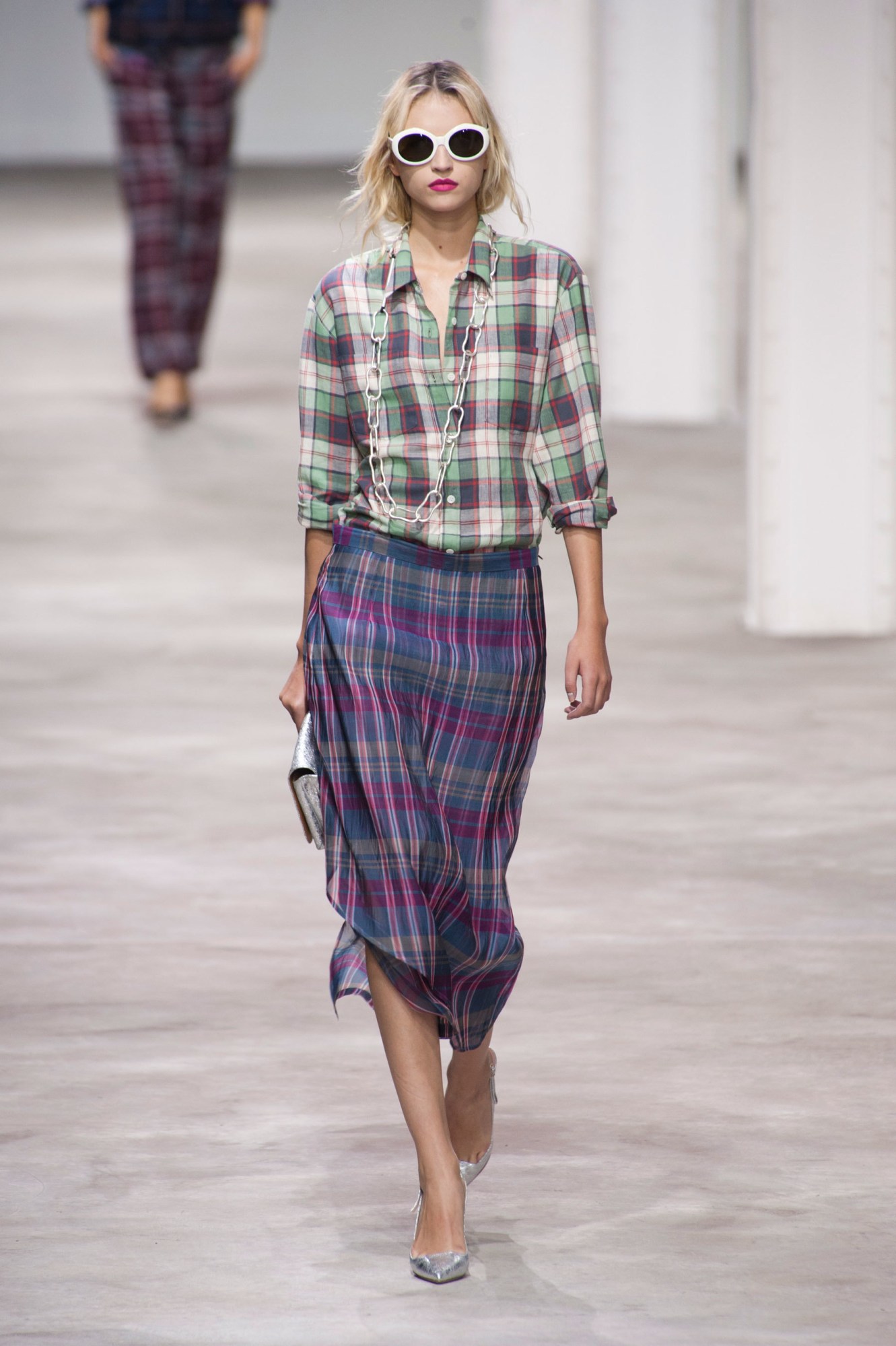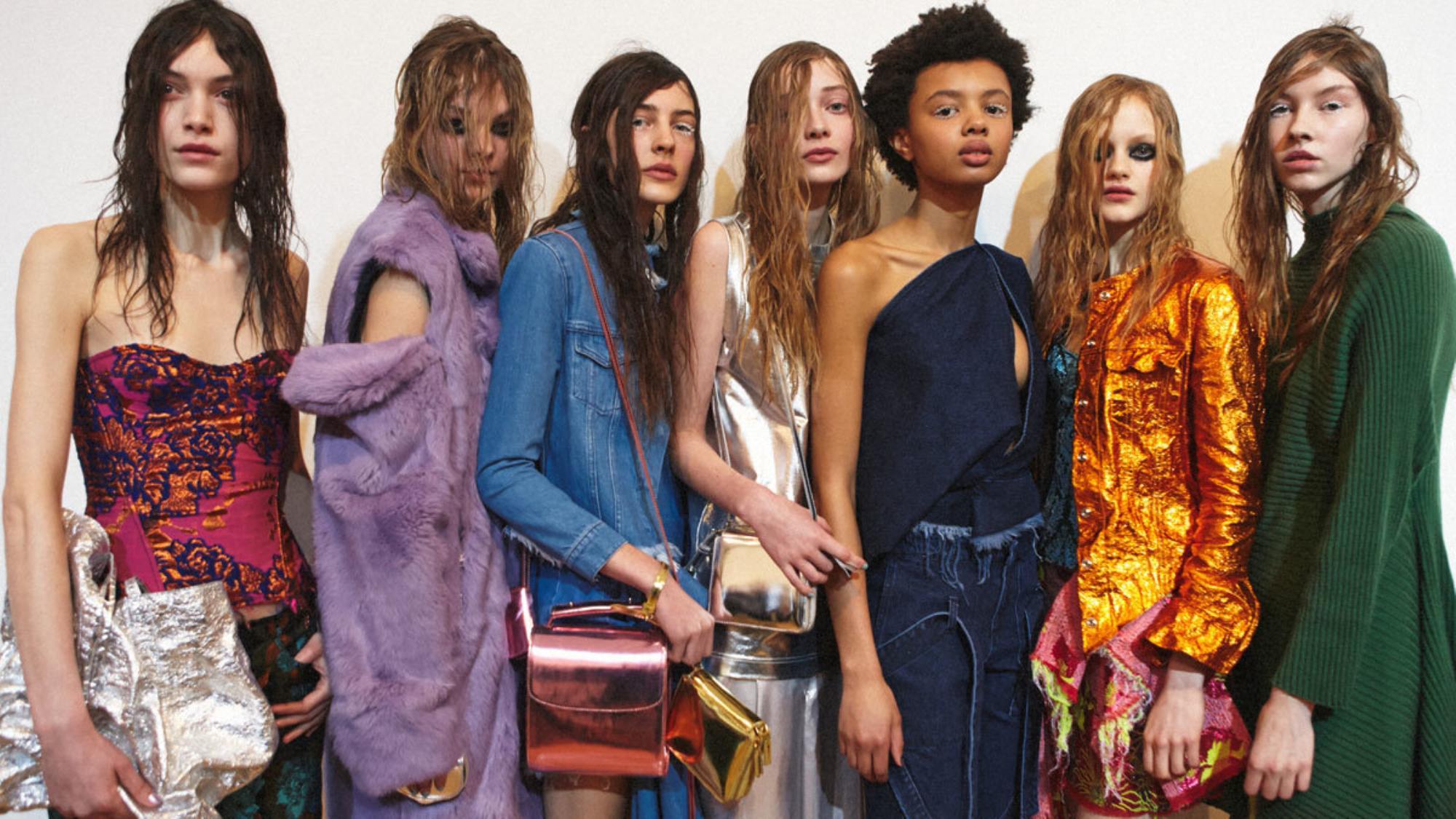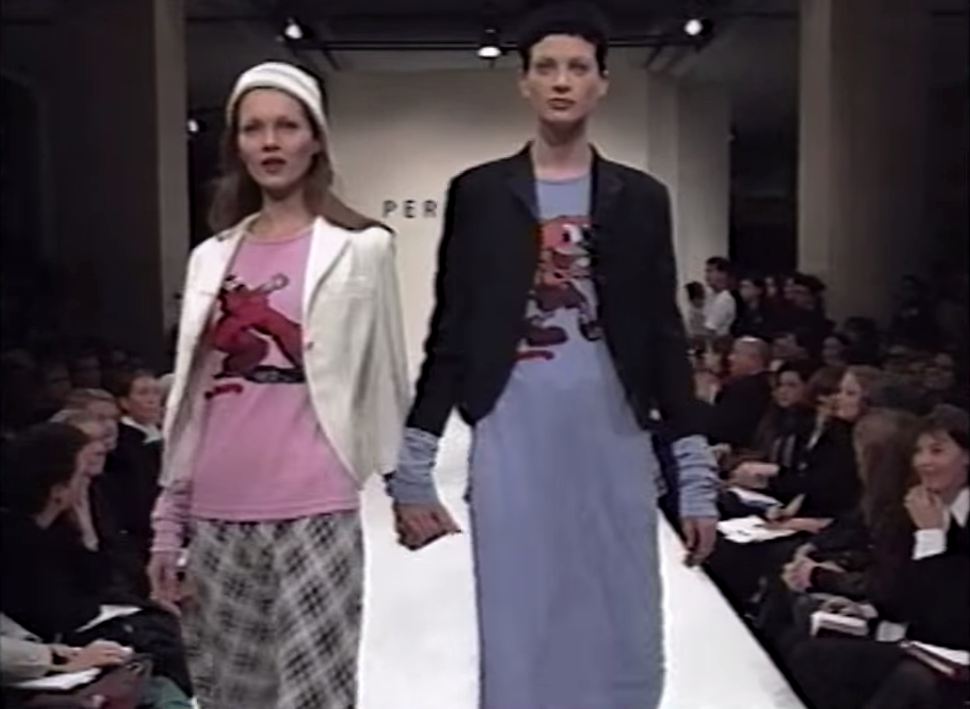Since November 3, 1992, runway fashion has returned again and again to a short-lived West Coast subculture that was arguably already waning by the time Marc Jacobs put Christy Turlington in Dr. Martens and flannel for Perry Ellis. Grunge was there in Dries Van Noten‘s beautiful spring/summer 2013 tribute to plaid and florals. It’s written all over the ragged denim of this year’s LVMH Prize winners and i-D favorites Marques’Almeida. And most obviously, it’s the driving force behind Hedi Slimane’s takeover at Saint Laurent.

But are we beginning to sound like a broken L7 record? Why does high fashion have such a lasting obsession with a D.I.Y. movement that was so resolutely slammed by critics the first time it stomped down the runways? And, in 2015, has grunge finally played out?
The kickback from Jacobs’ dip into Seattle youth culture for Perry Ellis was immediate and violent. Cathy Horyn wrote in the Washington Post the following day: “The Seattle music scene, which spawned the cockeyed [Courtney] Love, has inspired a scruffy cool on Seventh Avenue so deliberate as to seem dated the moment it appears on the runway.” She followed with some amazingly specific takedowns, like, “A red vinyl car coat seemed calculated to offend by appearing as clammy and crinkled as old diner leatherette.” The following March Suzy Menkes famously gave out “Grunge is Ghastly” pins to fashion editors at the Milan shows.
And critics weren’t grunge’s only fashion-world haters. Retailers feared that clothes which approximated angsty teens’ Seattle thrift store finds weren’t aspirational enough (Jacobs was dismissed from Perry Ellis in early 1993). But the loudest criticism, ironically, was that Jacobs’ collection felt inauthentic. Rick Marin, in his 1992 origin story of grunge for the New York Times, pointed out that Jacobs had never even been to Seattle. And by the time of his show, the sounds and style of grunge had already been pawed over by Hollywood. Cameron Crowe’s Seattle-based romantic comedy Singles was arguably the scene’s swan song, and it came out two months before Jacobs unleashed Seattle on Seventh Avenue.
Marc Jacobs for Perry Ellis spring/summer 13 in the video for Sonic Youth’s “Sugar Kane”
But for fashion fans in 2015 who weren’t old enough to attend the first Lollapalooza or read the Washington Post in 1993, the Perry Ellis grunge collection is a major touchstone. Yes, there are hundreds of Fuck Yeah Kurt Cobain tumblrs with subtly different punctuation. But the moment when Marc Jacobs put Birkenstocks on the catwalk is an equally authentic point of reference for the internet generation. And the same goes for other standout moments in the high-fashion grunge boom that followed. The grunge-inspired collection Anna Sui showed in New York the day after Jacobs’ is still alive on Tumblr and Pinterest. And so are Steven Meisel’s now-iconic images of Kristen McMenamy and Naomi Campbell in scuffed-up boots, prairie dresses and blanket-like plaid from Vogue in December 1992.
The internet allows us to time travel through fashion history while ignoring the subtleties of chronology. On Tumblr, what looks cool is cool and what does it matter if the original grunge scene was dead before Perry Ellis found it?
But if grunge already felt “deja vu” in the early 90s, as Cathy Horyn wrote in 1993. Why do we still think it’s cool? Why did Hedi Slimane’s shaggy-haired boys and girls wear white Kurt Cobain sunglasses and baby-doll dresses on the Saint Laurent catwalk this past June?
The original grunge movement grew out of the music world – out of proto-grunge acts in early 80s Minnesota and Northeastern alternative bands like the Pixies – and solidified in the calmer, crunchier coffee shop scene of Seattle. But its adoption by high fashion was also a symptom of the country’s economic climate. Anna Wintour later told WSJ, “I never really subscribed to the emaciated, depressed, frumpy look of fashion. I think that was at a down time in our economy and the world. Obviously the designers were reflecting a movement.” She fought to cut that Steven Meisel editorial from Vogue in 1992. “Grunge just wasn’t working,” she said. “It was a battle cry, ‘let’s move on.'”
Anna Sui spring/summer 13
The other issue is that grunge-inspired fashion is almost an oxymoron. It’s fashion imitating a movement which could not have cared less about fashion. In 1993, James Truman, then the editor-in-chief of Details, said, “To me the thing about grunge is it’s not anti-fashion, it’s un fashion. Punk was anti-fashion. It made a statement. Grunge is about not making a statement, which is why it’s crazy for it to become a fashion statement.” It’s the irony of Marc Jacobs getting Oribe to style models’ hair to look like bed-headed musicians who couldn’t afford shampoo. It’s the irony of marketing expensive clothes that look like beaten up L.L. Bean cast-offs bought for $5.
And that irony is still alive and well. When Hedi Slimane staged one of grunge’s boldest comebacks, at Saint Laurent for spring/summer 13, Suzy Menkes wrote, “The only question is whether this reprise of grunge is appropriate to a 21st-century world of financial turbulence.” The economic parallels between 2012 and 1992 were striking (in both years the financial outlook in the U.S. was bleak). And the gap between Slimane’s impoverished-musician inspiration and hefty price tags was hard to miss. But his clothes have sold and increasingly been embraced by editors and even new-gen grunge musicians like Sky Ferreira and Alison Mosshart who wear those clothes on stage. Because the very thing about grunge that made it scary for buyers in 1992 – its anti-establishment attitude and whiff of Seattle squats – is what makes it still seem cool and authentic to consumers today.
But what are the ethics of fashion’s glamorizing of a scene that was created by struggling musicians? Until MTV put “Smells Like Teen Spirit” into its “Buzz Bin” in September 1991, Kurt Cobain was still, according to Sub Pop co-founder Jonathan Mr. Poneman, “dirt poor.” Is doing grunge on the runway in the 2010s actually inherently uncool? Or is there a way to reference and rework it without disregarding everything it was about? Hedi Slimane’s clever salty-haired Californian Cobain isn’t the only new avatar of grunge.
The 90s are woven into the DNA of London-based brand Marques’Almeida, but nothing about designers Marta Marques and Paulo Almeida’s version of grunge comes off as pastiche. “It’s not meant to be nostalgic. I hate that word,” said Marques in a recent interview with Suzy Menkes. Instead, the brand’s distressed denim and mussed-up textures tap into the D.I.Y. foundations of grunge, while telling a new story. “As teenagers we had no understanding of high-end fashion,” said Almeida in the same interview. The designers were inspired by “what our siblings and friends were wearing,” and specifically by Marta’s sister, Sofia, who was always “grungy and grumpy and didn’t care about fashion at all.” Their collections, as a result, always feels fresh: rather than literally reproducing the aesthetic of the 90s Seattle music scene, Marques’Almeida recasts its scrappy attitude for a new generation.

Grunge is often framed as the last true, distinct subculture to have infiltrated fashion. And that would go a long way to explaining why it’s become so fetishized. Even in 1992, Rick Marin wrote, “From subculture to mass culture, the trend timeline gets shorter and faster all the time.” Throw in the internet, and over a decade later that timeline is near non-existent. Something happens in a neighborhood in Seattle today and anyone with Reddit can know almost instantaneously. But just because the gap from underground to mainstream is closing, it doesn’t mean there aren’t new scenes and subcultures emerging.
Look at Hood By Air, a brand with an aesthetic born out of Shayne Oliver’s experience of the New York scene that sprung up around nights like GHE20G0TH1K. Or Gosha Rubchinskiy‘s collaborative work with skater kids in Moscow. Or Vetements, which is becoming a platform for a grungy but fresh scene in Paris. None of these brands is regurgitating the tropes of past subcultures, they’re pushing fashion forward because they tap into new creative veins. They don’t imitate authenticity, they’re simply authentic.
This past April, Cathy Horyn revised her opinion of Marc Jacobs’ grunge collection. She mused, “I think it’s safe to say that [fear] comes from new things, of which fashion writers are oddly intemperate.” Fashion is at its most exciting when it gives you that jolt of fear. And hasn’t the shock of plaid and Docs on the runway worn off? The truest way fashion can do grunge is by channeling its spirit. It’s about doing it yourself and saying something new.
Related: ‘Street, Sound & Style’ Episode 3: Grunge
Credits
Text Alice Newell-Hanson
Image via YouTube
